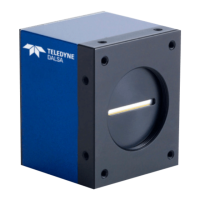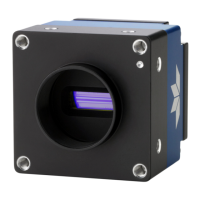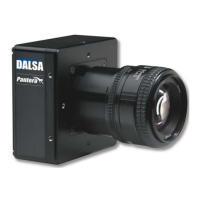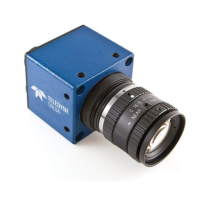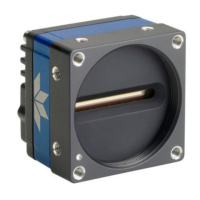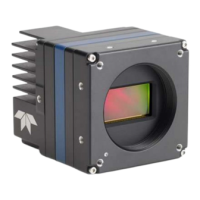34 Spyder 3 CL User's Manual
03-032-20008-00 DALSA
Figure 18: Spyder 3 CL Heatsink Mechanical Dimensions
48.0
60.032.0
14.0
3.2 THRU (2X)
2.0
27.0
8.0
18.5
29.0
39.5
50.0
2.0 (7X)
5.0 (2X)
4.2 Optical Interface
Illumination
The amount and wavelengths of light required to capture useful images depend on the
particular application. Factors include the nature, speed, and spectral characteristics of
objects being imaged, exposure times, light source characteristics, environmental and
acquisition system specifics, and more. DALSA’s Web sitewww.dalsa.com/mv, provides
an introduction to this potentially complicated issue. See “Radiometry and Photo
Responsivity” and "Sensitivities in Photometric Units" in the CCD Technology Primer
found under the Application Support link.
It is often more important to consider exposure than illumination. The total amount of
energy (which is related to the total number of photons reaching the sensor) is more
important than the rate at which it arrives. For example, 5μJ/cm
2
can be achieved by
exposing 5mW/cm
2
for 1ms just the same as exposing an intensity of 5W/cm
2
for 1μs.
Light Sources
Keep these guidelines in mind when setting up your light source:
• LED light sources are relatively inexpensive, provide a uniform field, and longer life
span compared to other light sources. However, they also require a camera with
excellent sensitivity, such as the Spyder 3 CL camera.
• Halogen light sources generally provide very little blue relative to infrared light (IR).
• Fiber-optic light distribution systems generally transmit very little blue relative to IR.
• Some light sources age; over their life span they produce less light. This aging may
not be uniform—a light source may produce progressively less light in some areas of
the spectrum but not others.
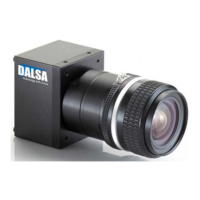
